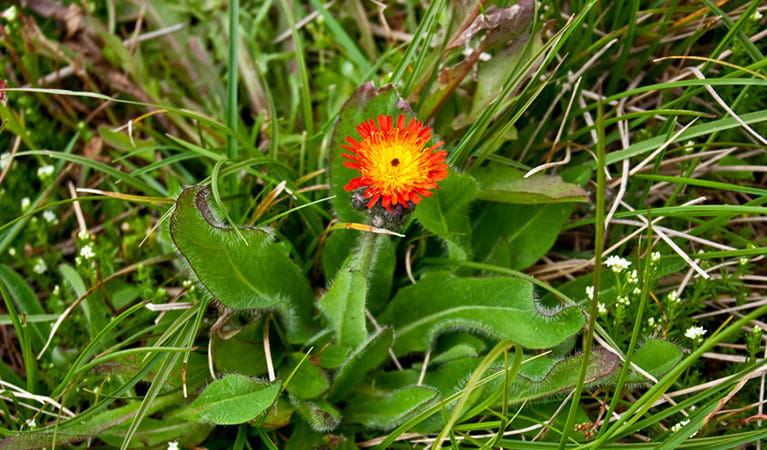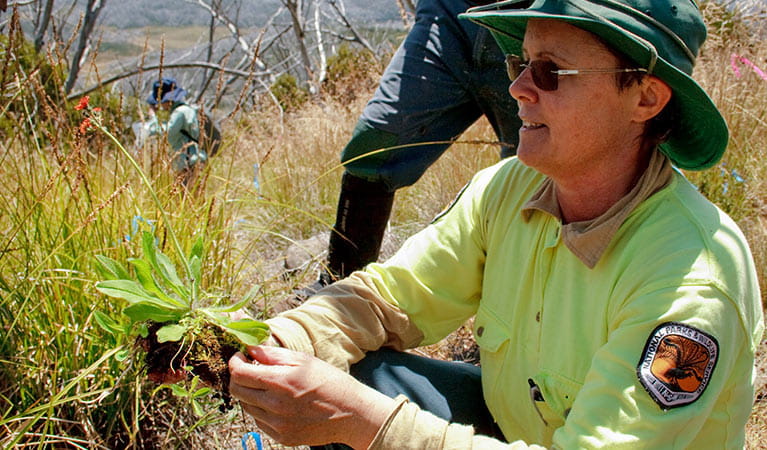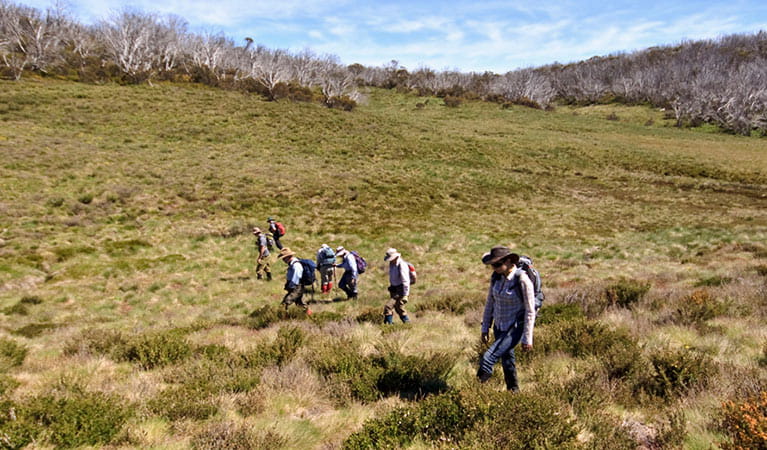Hawkweed eradication program
Orange and mouse-ear hawkweed are highly invasive weeds in Kosciuszko National Park. Small infestations of both species in the park's sensitive alpine and sub-alpine environments, and of orange hawkweed in nearby grazing land, threaten Australian native plants, biodiversity and agriculture.
Read more about Hawkweed eradication program
The hawkweed eradication program involves surveillance by volunteers and staff on the ground, drones in the air, and scent detection dogs. Once found, infestations are marked, treated with herbicides, and continually monitored to ensure eradication.
Orange hawkweed and mouse-ear hawkweed have daisy-like orange and yellow flowers respectively, but they're serious invasive weeds. In fact, both species are Prohibited Matter under the NSW Biosecurity Act and are on the National Environmental Alert List. This lists 28 non-native plants that are at the early stages of invasion, but could be a major threat to biodiversity if not managed. They're also recognised as a National Agricultural Sleeper Weed, given its significant impacts to grazing lands in New Zealand and North America.
Orange hawkweed was discovered in Kosciuszko National Park in 2003. Since then, an eradication program has sought to eradicate the species from NSW, and as a result avoid widespread infestation and ongoing control costs. There's evidence this is working too – volunteers have helped with intensive monitoring surveys to find plants. Following careful application of herbicide, over time infestations have been reduced to less than 1 per cent of the original size.
It’s a long process, but the eradication program has contributed to our understanding of hawkweed biology and ecology. It's also provided information that increases the likelihood of success in the future.


